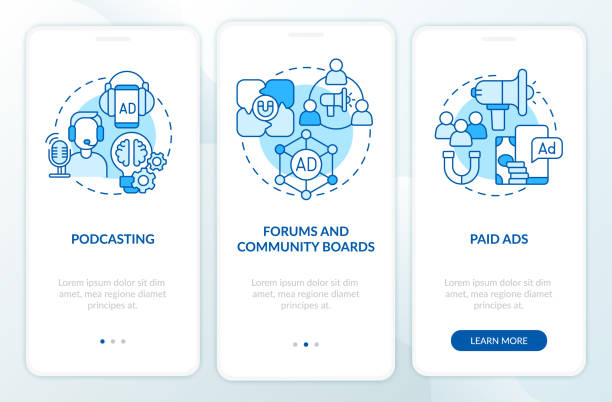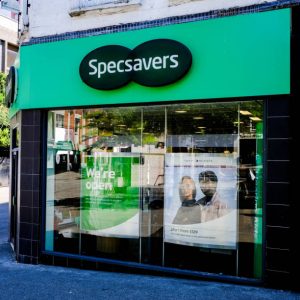
Digital marketing is integral to any marketing strategy, regardless of industry or size. It can help an organization create brand awareness, increase sales and reach potential customers. You can design a digital marketing strategy for an organization by learning about different digital marketing strategies. This article examines 12 examples of digital advertising and offers advice and tips on implementing them.
Digital marketing examples: 12 examples
Digital marketing comes in many forms, and your choice of approach will often depend on the goals of your marketing plan. Digital marketing is how organizations promote their brands, products, or services via one or more online channels. These digital strategies can help an organization reach potential clients, engage them, convert leads into purchases, and build brand loyalty. Digital marketing includes:
Social Media Marketing
Social media marketing is a way to interact with customers, promote products and services and build brand awareness. This digital marketing type has changed the way companies interact with their customers, allowing them to feel a connection with users. Brands can also use the data to improve their marketing strategies. An organization can do social media marketing organically, via paid advertising, or a combination.
Search engine optimization
Search engine optimization (SEO) is the process that improves a website’s visibility online. Search engine optimization (SEO) enhances a website’s online visibility. The higher up a site appears in search results, the more likely you will get clicks from potential customers.
Email marketing
Email marketing is a powerful tool for connecting with customers. As email marketing platforms have evolved to include hyper-personalization and detailed analytics on engagement, email marketing continues to be one of the most effective ways for an organization to reach its customers. Email marketing is a powerful tool for various reasons, including promoting new products, offering a bonus to existing customers, or spreading the word about a promotion or sale.
Digital Advertising
Advertising can be paid for on a variety of online channels. Examples are advertising on social media sites, websites, or search engines. Organizations can advertise in search engines by choosing between dynamic display ads or by placing their website above organic results at the top. Advertisers can refine their target audience by using data. They can then directly target their ideal clients. Organizations can place digital ads in podcasts, video content, and social media.
Search engine marketing
Pay-per-click is the most popular payment model in online advertising. PPC is a method of online advertising where the advertiser purchases click on their ads, typically through an auction. This type of search engine advertising makes the PPC advert appear like an organic search result. However, it is marked as an advertisement. Search engine marketing is cost-effective because you only pay for impressions that result in a page visitor.
Affiliate marketing and referrals
Bloggers and owners of online businesses often have a large audience. They communicate with their fans through social media, videos, and email newsletters. Often, organizations will use referrals and affiliate marketing to reach their audience. Bloggers and online entrepreneurs can benefit from a marketing incentive program based on a commission.
A chef who runs an online cooking channel could share a link with his followers so they can purchase knives. The manufacturer pays the chef commissions for each knife set purchased through their unique link. Online business owners could also share a discount code with their followers and earn referral commissions.
Influencer marketing
Influencers are already well-known in their niche, so marketers often partner with them, paying them for mentions or endorsements of brands or products. Influencers have a large audience that follows their advice and trusts their recommendations. This can be a very effective digital marketing strategy. This form of marketing pays an influencer to promote a brand through their online channels. They might post an unboxing or product review video on their social media channel to encourage their followers.
Instant message marketing
Instant message marketing has gained in popularity recently, with its immediateness and connectedness proving to be a great benefit for users. Instant message marketing is a powerful tool for connecting brands with their customers. As messaging platforms offer a quicker response, users prefer messaging platforms to traditional SMS. Instant messaging platforms allow marketers to engage in a two-way dialogue with their customers. This builds trust and loyalty. Chatbots, automatic responses, and other automated tools provide instant answers and a sense of connection.
Mobile Marketing
Many people use their mobile phones to get immediate answers. Mobile marketing is a way for marketers to capitalize on consumers’ reliance on smartphones. Many companies develop apps that provide consumers with a solution, but they also send push notifications to their audience when they want to reach them. Geolocation is also used in mobile marketing to tailor advertising. Mobile marketing can be omnichannel, including push notifications, SMS, instant messaging, and location-based marketing.
Video Marketing
Video-sharing apps are increasingly popular among internet users who prefer to use them to find answers to their questions instead of traditional search engines. There are a lot of “how-to” videos that can guide consumers to accomplish any task. Video marketing is approached in many different ways by marketers. Some brands create their channels and share helpful content with subscribers. Other brands use short-form videos to create engaging and entertaining marketing campaigns. Unboxing and product review videos can be valuable for brands looking to engage new customers.
Audio marketing
Podcasts are becoming increasingly popular, even though audio content does not have the same dynamic engagement as video. Consumers often use podcasts while they commute or work out. Brands can engage this audience in two ways. The first is to sponsor an existing podcast or find a show which links with your brand. Second, you can start your podcast to promote products and services. The podcast audience actively seeks audio content to educate or entertain them, so you can easily engage them with the right message.





